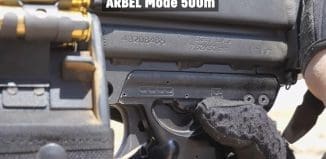In Search of New Technologies for Special Operations
This post is also available in:  עברית (Hebrew)
עברית (Hebrew)
The U.S. Special Operations Command (SOCOM) – office of Science and Technology strives to deliver game-changing technology to enable US warfighters to have an asymmetric advantage in any environment.
The agency has reached out to industry and academia for suggestions on how to deliver wearable, omni-directional antenna technology, intelligence tools that can see through walls to discover hidden spaces, and portable translation devices, to name but a few of the many projects that have emerged in recent years.
With $100 million a year and 30 people on the team, SOCOM Science and Technology is well-positioned to assess troops’ needs and set in motion the research needed to deliver point solutions.
c4isrnet.com talked to Lisa Sanders, director of science and technology for U.S. Special Operations Command within SOCOM Acquisition, Technology, and Logistics.
According to Sanders, the agnency does not directly fund basic research. If focuses on applied research and technology demonstration. Within that, they cover the gamut of anything that a user would need.
Its past projects include high-performance ballistic helmets, maximizing performance for minimum weight; mobile ad hoc networks, with a radio that is flexible to work with different command and control networks; a shoulder-fired rocket with reduced weight, etc.
The major bottom-up goals come from the war-fighter community. The agency also implements a top-down look, where they look at the strategy of the organization and identify the things that are need to achieve that strategy in the future environment. Sanders said: “That’s where we get to game-changing, revolutionary technologies. In that conversation we also work with technology providers from the industry side, from government developers, and from academia. The real magic happens when we have a problem that pairs with one of those potential technologies”.
She told c4isr.com: “One of the things we are seeing as we move from counterinsurgency that we have been doing, as we look forward, we are looking at a higher level threat environment. We’re looking at operating against peers or near-peers, people who have equally high technology capabilities.
In there, some of the things we think will leap ahead would be things like different ways to achieve what we get from GPS today — precision navigation and timing. Right now we have that because our GPS signal is available to use. In a future fight, a peer or near-peer adversary could degrade that”.
One of their achievements has been the shark bite wound dressing: “That is going into Special Forces combat medic kits, and we fully expect it will transition to the general purpose service and even the general public. It uses advanced clotting technology and it works against a large, irregular area. Imagine if a shark bites you. Trying to stop that bleeding is very difficult: It’s a large surface, it’s irregular and you can’t get a lot of compression. With this material you can cover that and it stops the blood without the need for compression”.
“we are still working on color night vision. If you are disabling an explosive device the ability to see red from green does matter. We can articulate that need and put technology in the hands of users quickly. Based on their feedback it often transfers to the more general forces.
Sanders concluded that they focus on technology that is oriented to improving a specific war-fighter capability gap. “Tactical unmanned aerial systems, that’s a place where special operations led the way and it changed the way we do things. Mobile ad hoc networks. That is central to the C4I [command, control, communications, computers and intelligence] world, and special ops was an early generator and adapter. Same with combat medical devices. It’s all about having technology with a specific purpose”.





























